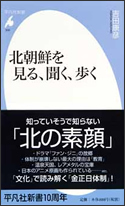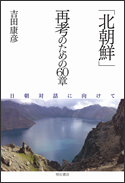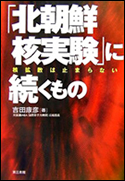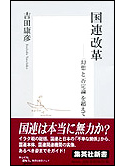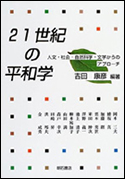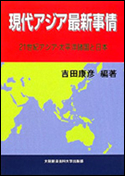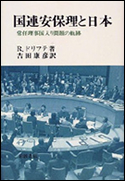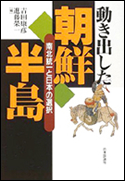Composition:
Professor YOSHIDA Yasuhiko, leader
Professor NAKATO Sachio, Ritsumeikan University
Mr. OHMURA Manabu, independent photographer
Mr. OKAZAKI Takayuki, editor, News Network of Asia (NNA)
We arrived in Pyongyang airport via Beijing on the afternoon of Saturday 26 April. Two senior officials of the Association for the Promotion of Cultural Relations with Foreign Countries (DMW), the Foreign Ministry’s affiliate, were on hand to take care of us. We were accommodated at the Haebansan(Liberation Mountain) Hotel in downtown Pyongyang. I had designated the hotel in advance by E-mail to DMW, in view of its ideal location of moderate price. The room rate was 55 Euro a day including breakfast, fixed for all foreign tourists.
It was my 9th visit to North Korea since 1994. I had been accommodated always in the top-class de luxe and expensive hotels, such as the Hotel Koryo and the Yangakdo Hotel.
We had dinner at a restaurant, annex of the Pyongyang Hotel, and were welcomed by Mr. Phan Ho-nam, Director of the Japan Department, DMW, and joined by a special reporting crew of the Kyodo News Service in Tokyo, who had flown to Pyongyang to cover the sacred torch relay for the Beijing Olympics.
On Sunday 27 April, we visited the Taegang collective farm in the suburbs of Pyongyang, where a technical director, explained how agricultural reform, such as double-cropping a year and breed improvement, has been successfully carried out. The farm is a model which Great Leader Kim Il-sung and Dear Leader Kim Jong-il have made inspection visits frequently. In the afternoon, I visited Pyongayang’s central zoo, which accommodate a total of 6,000 birds and animals, as well as fish.
On Monday 28 April, a visit to an open set for cinema shooting was quite spectacular and impressive. Movies in North Korea are one of the most popular entertainments under a special patronage of Kim Jong-il, who had confessed, “I would have been a film director rather than a politician, should my circumstances be different” The tour was followed by visits to a primary school for photographing and a music academy where crew members of the New York Philharmonic Orchestra came to train students when they performed in Pyongyang in February. Finally, we were invited to a performance of the Pyongyang Circus, which is North Korea’s national pride.
A hectic day ended with an official welcome dinner hosted by the DMW Vice President, Ms. Hong Son-ok, who is a member of the nation’s Supreme Council. She called on President George Bush to respect the principle of simultaneous action in lifting Washington’s economic sanctions against the DPRK.
On Tuesday 29 April, the whole day was spent for meetings with senior officials of the DPRK in various fields. Mr. Ju Wang-fang, director of the Foreign Ministry’s Peace and Disarmament Institute criticized the Bush Administration for neglecting the reciprocal commitments for the purpose of denuclearization of the Korean Peninsula. The DPRK has already submitted a complete and accurate list of declaration of all its nuclear activities. It is up to President Bush whether its goal would be achieved during his term of office until January 2009.
Mr. Kim Ung-chol, Deputy Secretary-General of the North Korean Red Cross said that flood damage caused in summer last year has been overcome, but admitted that the nation was suffering from severe food shortage this year. In this sense, he added, the most recent U.S. decision to send 500,000 tons of crops to the DPRK is most welcome.
Mr. Cho Byong-chol, senior Foreign Ministry official in charge of Japanese affairs, bitterly denounced the Japanese Government decision in April to extend its economic sanctions against the DPRK for six months until October. He noted that the sanctions were invoked in protest against Pyongyang’s nuclear test in October 2006, but in fact were extended twice in excuse of the unsettled Japanese abduction case. However, he said a supra-partisan parliamentary mission from Japan would be welcomed, provided that Japan should lift its sanctions, even partially.
On Wednesday 30 April, I held a meeting with two senior officials of the Ministry of Culture in charge of all artistic activities, including music, theatre, movies, fine arts and literature. They emphasized that all products are not commercialized in the DPRK and all artists’ life are fully protected.
It was followed by a meeting with two key officials of the nation’s Economic Planning Commission, who confessed the energy shortage is the most urgent problem now facing the nation. However, they emphasized, the crisis is being overcome with an increase in the construction of new small-and-medium-sized hydro power stations, as well as solar and wind power stations, across the country. During our one-week stay, no interruption in electric power supply was experienced.
On Thursday 1 May, the May Day festival was observed throughout the country. It’s a national holiday. I proceeded to Nambo, a port city on the west coast, to experience a hot spring bath, the first experience in North Korea. The bath house was crowded with two large groups of Australians and West Europeans. I also visited a group of ancient tombs of the Koguryo Dynasty, which are designated as the World Heritage.
On Friday 2 May, additional visits to a junior high school, a kindergarten and an ordinary Pyongyang citizen’s home were prepared by the DMW on our behalf. The visits were impressive. Finally, a dinner was hosted by us in appreciation of the DMW which had organized a significant program for Japanese visitors at a time when their government had just extended economic sanctions against Pyongyang.
On Saturday 3 May, our passenger jet of the Koryo Airlines, the Soviet-made Illysin 62, was unable to land on Beijing’s airport due to bad weather. The plane finally landed at Shenyang’s airport, where we had to waste six hours, confined in the narrow and tight cabin. It was almost midnight when we could land at Beijing airport.


